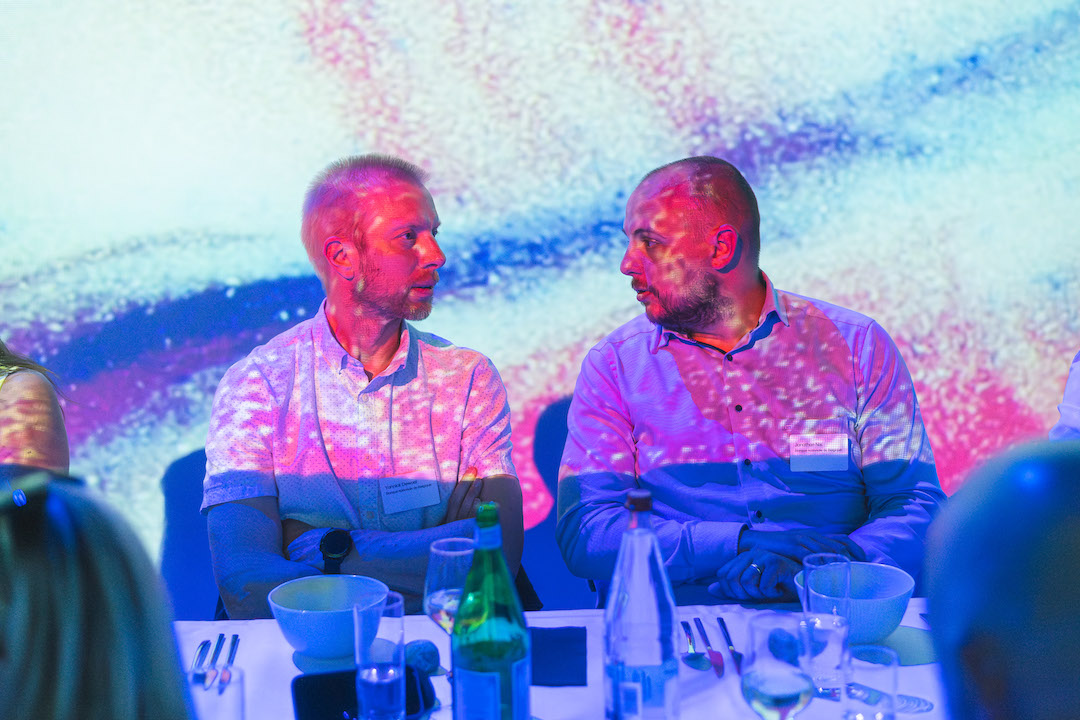Starting photographers are often curious about the settings used in different scenarios. It can help you understand certain choices and use similar settings whenever you find yourself in the same situation.
The same goes for event photography. Often photographers are curious as to what settings to use in that situation. As often, events aren’t the best-lit places.
I’m going to share my settings. Don’t just copy them. Make sure you understand the choices. See where I make the wrong decisions. Test and tweak them.
Usually, I’m on aperture priority mode when shooting events. As the aperture, for me, is the most essential part of the exposure triangle.
It allows me to decide how much of the background should be in focus. Often, in busy spaces, I want to focus on specific individuals for some candid closeups and then have the entire room in focus for an overview.
How fast my shutter is at that moment isn’t important to me. As long as it’s above 1/200th, let’s say.
I used to shoot fully manually, but this caused me to be busy with the exposure more than the event and subjects. All because of my ego.
Though manual does have it’s benefits. For example, if the lights are constant. It can be easier to just go in manual. This way, if you edit, all photos are exposed the same. Making those bulk edits go a lot faster.
I also recently started using auto ISO. Before that, I would just keep an eye on my shutter speed to see if it didn’t get too low. And if it did, I would step up the ISO.
But it’s actually better to just do the ISO automatic, too. Go into your settings and give in the parameters your camera can work with. Dial in the highest ISO your camera can handle properly and then the lowest shutter speed you’re comfortable with.
Usually, the shutter speed shouldn’t go slower than the length of your lens—for example, 1/50 for 50mm or 1/200 for 200mm. I actually prefer to double it. 1/100 for the 50mm and 1/400 for the 200mm. Just to be sure.
Though the Noise Reduction AI in Lightroom is fantastic, I don’t shoot with the idea of relying on it. It’s a nice extra, but don’t shoot thinking about how it will save your photo.
Before using a flash, ask the event organizer if it’s okay to do so. It usually is, but I think it’s polite to ask first.
When using it, I usually have it on TTL with an EV compensation of somewhere between -0.3 and -1. I like the flash to add a touch of light but not be too on the nose.
I always try to avoid flash because it makes you more visible when doing candids. But sometimes, it’s better just to use the flash as some eventspaces are not made with photography in mind.
Before I forget to mention it: shoot RAW. You’ll be able to do far more in Lightroom with raws than jpegs.
Did you recently shoot an event? Share the settings you used in the comments below!



Also, buy the Canon 28 to 70 f 2.0 🙂
Recently, I’ve gotten into a discussion about settings to cover events (birthdays, mitzvahs, quinceaneras, etc.) with my peers. They looked at me as if I was from another planet when I told that my default mode is aperture priority – they were all hardcore full manual shooters. After a decade of covering events, mostly in evening and at night, aperture priority mode is where I have ended up after many tweaks. In a fast-changing lighting situations and fleeting moments to be captured during the event, fiddling with settings was last thing I needed to be doing.
With limitations placed on slowest shutter speed (1/125) and ISO range (100-6400). Flash is set to TTL mode and flash exposure compensation at-.7 (-2/3 stops) for the same reason as you’ve noted. They’re about the same settings as what you’ve stated in the article. Thanks for this, I feel validated.
And when the lighting is more stable, I would set to manual after shooting a few in aperture priority mode, for the same reason that it makes batch processing easier.
Cameras and imaging technology have improved greatly even during the last decade – I can entrust the camera more to come up with settings that are ideal for each situation (and I say so as a former film shooter and from the days when automatic modes were just not as reliable).
Great to hear that my post validated you in your settings. Same goes for your comment to my settings. 😉
I do think theres a time and place for manual, but it shouldn’t be the standard each time.